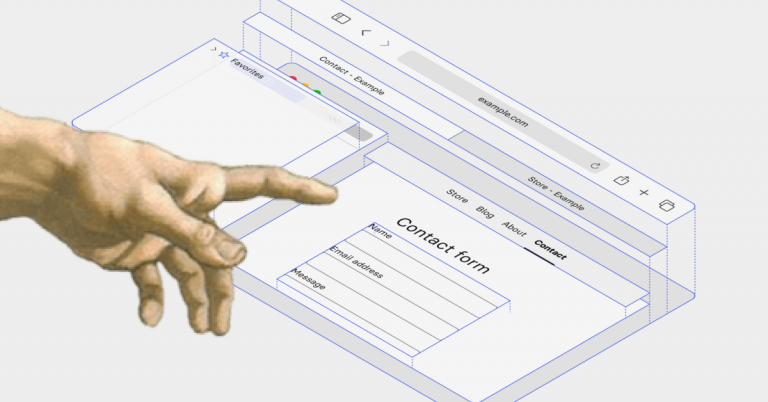Software Development Life Cycle (SDLC) is a key process in software engineering. It is an essential part of the software development process, providing organizations with the structure and framework for creating and delivering high-quality software applications. This article will provide a comprehensive overview of the SDLC, from initial planning to deployment and maintenance. We’ll explore each stage in detail, offering practical advice and tips for successful implementation.
Requirements & Analysis
Requirements and Analysis is the first stage in the Software Development Life Cycle (SDLC). This stage involves gathering all necessary information from the business stakeholders and end-users to understand what exactly they need. The purpose of this stage is to define what a software solution should achieve, how it should work, who will use it, and under what conditions. In order to do this effectively, all stakeholders must be involved and their needs must be considered.
The main outcome of the Requirements & Analysis stage is a detailed description of the system’s functional requirements, non-functional requirements, constraints, assumptions and risks. The functional requirements describe what the system does while non-functional requirements describe how well it does it. These requirements are then used as inputs for the next stages of SDLC which are design, development, testing and maintenance.
The requirements & Analysis stage is critical because if problems or misunderstandings arise later on in development due to poor analysis or inadequate documentation at this point in time may result in higher costs or even failure to meet business objectives. Therefore investing adequate time and resources at this early stage can save significant amounts of time later on during the development lifecycle.
Planning: Identifying Objectives
Identifying objectives is a crucial step in the planning phase of the Software Development Life Cycle (SDLC). This involves defining what the software should achieve, and what problems it aims to solve or prevent. Objectives must be clearly defined and aligned with business goals to ensure that the software development process will create value for stakeholders.
To identify objectives, developers may conduct surveys, collect feedback from users or other stakeholders, analyze market trends and competitors’ strategies, as well as review existing processes within an organization. It is important to prioritize objectives based on their importance and feasibility to ensure that they are realistic in terms of resources, timeframes, and budgets.
Having clear objectives establishes a common understanding between developers and stakeholders about what needs to be achieved through the project. This helps guide decisions throughout the SDLC process by providing focus on tasks that align with achieving those goals. Furthermore, having well-defined objectives can help measure progress toward meeting goals in order to adjust plans when necessary.
Design: System Architecture
System architecture is a critical aspect of the software development life cycle (SDLC) that encompasses the structural design and organization of a system. It involves defining system components, modules, interfaces, and data exchange between them. System architecture aims to ensure that the software solution is capable of meeting functional requirements while being reliable, maintainable, scalable, and secure. A well-designed system architecture can bring significant benefits to a Software Development Life Cycle project by reducing development costs and time-to-market.
One key factor in designing a robust system architecture is identifying the integration points between various components or modules. This helps establish the relationships between different functions and ensures proper data flow through the system. Another essential aspect is selecting appropriate hardware and software platforms that align with business needs while also ensuring compatibility with existing systems. System architects should consider future scalability requirements when selecting technology solutions to accommodate potential growth later on.
Designing an effective system architecture requires careful planning, collaboration among team members involved in a Software Development Life Cycle project, and adherence to best practices in software engineering principles. Proper understanding of this crucial aspect of SDLC can help developers create a more efficient codebase from which they can develop better features for users at lower cost over time.
Development: Coding & Testing
Coding is the heart of software development. In this stage, developers create algorithmic instructions in a specific programming language to build software according to the design specifications. Coding can be divided into two parts: front-end and back-end development. Front-end coding involves creating the user interface (UI) of the application or website, while back-end coding focuses on implementing server-side logic and managing databases.

Once the code is written, it must go through rigorous testing to ensure its quality and functionality. Testing begins with unit testing, where individual components of code are tested for accuracy and efficiency. Next comes integration testing, which verifies that different modules work together seamlessly. System testing is performed to evaluate whether the entire system meets all requirements as per design specification documentation. Finally, acceptance testing is done by end-users to ensure they are satisfied with how well the product performs according to their needs.
Coding and testing are integral parts of software development that ensure high-quality products meet customer expectations.
Integration: Component Interaction
When it comes to integration in software development, component interaction is a crucial aspect that cannot be ignored. It involves the process of connecting different components of a system to ensure seamless communication and data transfer between them. This is important because it ensures that all components work together harmoniously, resulting in a fully functional software system.
One way to manage component interactions is by using changelog templates. These templates provide a clear overview of all changes made to different components and how they affect other parts of the system. With this information readily available, developers can quickly identify any potential problems that may arise from integrating new features or updates.
In addition, changelog templates help streamline the integration process by ensuring that all team members have access to the same information regarding changes made to various components. This way, everyone can stay on top of any issues that may arise during integration and work towards resolving them promptly, resulting in an efficient and successful integration process.
Deployment: Release & Monitoring
Once the software development process has come to an end, it’s time for deployment. This phase includes releasing the application into a live environment and monitoring its performance. Most organizations use an automated deployment process to ensure that the release is seamless and error-free. However, it’s important to have a contingency plan in case any issues arise during the deployment.
Monitoring is another crucial aspect of deployment. It involves keeping track of application performance, user experience, and system health. Monitoring tools provide valuable insights into how the application is behaving in real-time and help developers identify potential issues that may occur. Based on these insights, developers can take corrective measures to improve performance and ensure optimal user experience.
Deploying software into a live environment requires careful planning and execution. Automated deployment processes are becoming increasingly popular as they help minimize errors during release. Monitoring also plays a key role in ensuring that applications perform optimally post-deployment by providing valuable insights into system health and user experience.
Maintenance & Updates
Maintenance and updates are critical aspects of the software development life cycle (SDLC). These ensure that the software stays functional, relevant, and secure over time. Maintenance includes corrective measures for errors or bugs found during user testing or deployment. It also involves preventive measures such as backups, system monitoring, and security checks to minimize downtime and prevent data loss.

Updates are necessary because technology is always evolving. New features must be added to keep up with changing user needs or business requirements. Security patches must be applied to protect against new threats or vulnerabilities discovered in existing code. Updates must also be tested thoroughly before being rolled out to users to avoid introducing new bugs that could compromise the integrity of the system.
Maintenance and updates are crucial components of SDLC that help ensure software remains functional, secure, and relevant over time. Proper planning, documentation, testing and execution throughout these stages will make it easier for developers to track changes made in previous versions of a software application while streamlining communication among stakeholders involved in its development lifecycle.

Quick Setup, Easy to Use, and Many Integrations
Manage your product announcements from a single place and easily distribute them
across multiple channels.
Conclusion
In conclusion, the Software Development Life Cycle (SDLC) is an important tool for software engineers and project managers. It provides a framework for developing, testing, and deploying applications in a predictable and efficient manner. By understanding each phase of the SDLC, organizations can ensure that their projects are completed on time, within budget, and with satisfied users. This guide has provided a high-level overview of each phase of the SDLC to give you an introduction to the process and its benefits.
Frequently Asked Questions
What is SDLC?
The Software Development Life Cycle (SDLC) is an essential part of the software development process, providing a structured approach to the planning, implementation and maintenance of software systems. It is composed of several distinct stages which involve a variety of activities related to the creation and deployment of software. At the beginning of the cycle, it is important for project stakeholders to decide on which SDLC methodology will be used: traditional or agile.
How to choose SDLC model for a project?
Choosing the right SDLC model for a project is an important decision and should be done carefully. It is essential to know the scope of the project, project timeline, budget, resources available and other factors before making a choice. It is also important to evaluate each model in terms of its strengths and weaknesses to choose the one that best fits the objectives of the project and can deliver results within given constraints.
Is SDLC agile?
SDLC is an acronym for Software Development Life Cycle, which is a process for developing software. It is not strictly considered to be agile as it does not necessarily follow the principles of agility such as flexibility and collaboration. However, many organizations are adapting the SDLC process by incorporating agile practices into each phase of the software development cycle. By doing this, they can benefit from being able to quickly deliver quality software products that meet customer needs.







